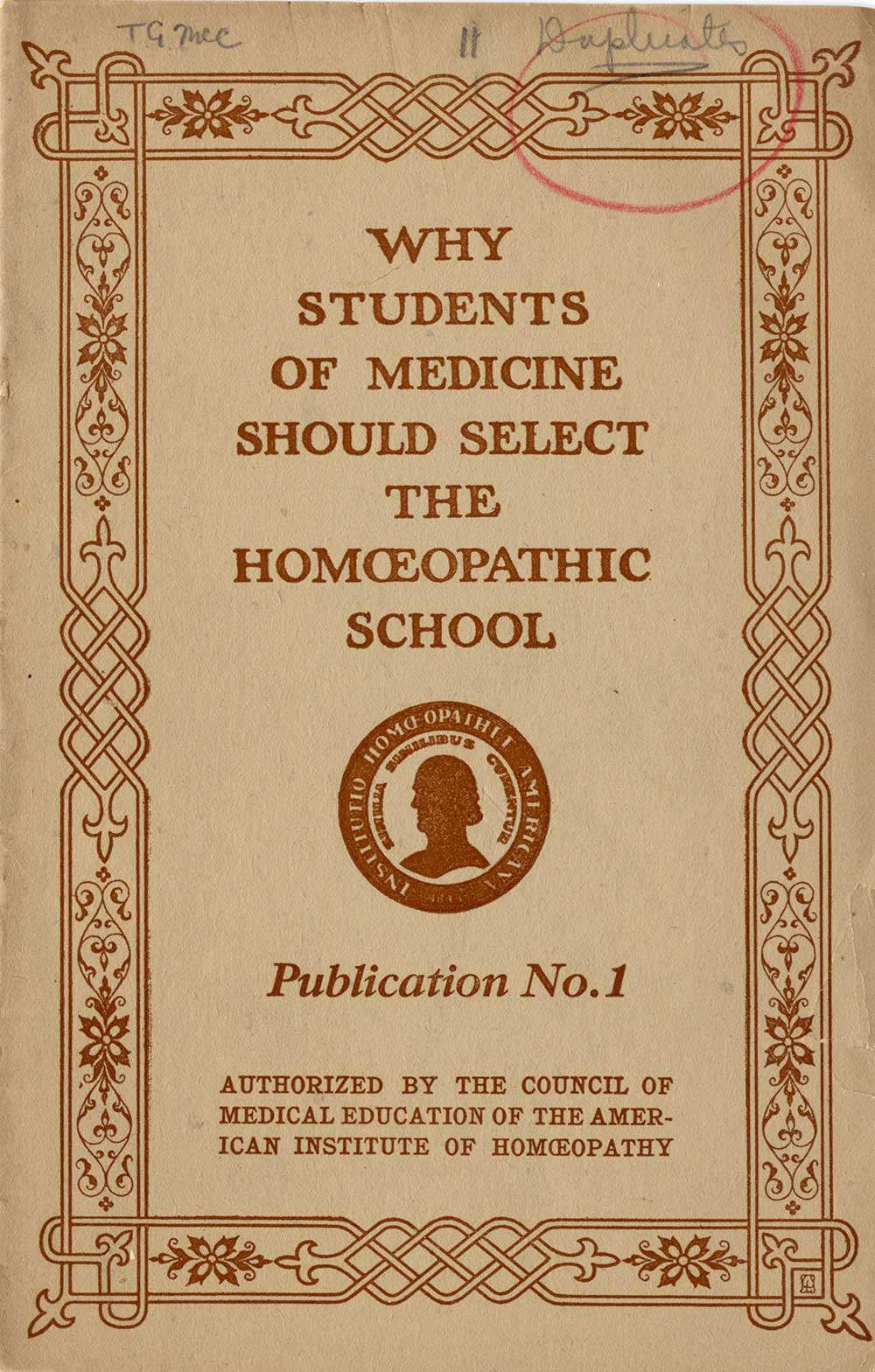UCSF Archives and Special Collections houses an important collection documenting the development and history of homeopathy. In 1962, most of the Homeopathic Foundation of California’s Library was donated to UCSF. The collection consists of more than 1,300 monographs, pamphlets, serial titles, and manuscript materials.

Manuscript materials on the history of homeopathy
California Homeopathic Institutions Records, 1884-1984
This collection contains the following materials:
- Hahnemann Hospital, 1906-1982
- Hahnemann Medical College, 1877-1986
- San Francisco County Homeopathic Society
- Homeopathic Foundation of California, 1923-1941
- California State Homeopathic Medical Society, 1877-1930
- California Women’s Homeopathic Association, 1959-1989
- Photographs
- Papers of homeopathic practitioners
Otto Ernst Guttentag Papers, 1930-1990
German born, Dr. Otto Guttentag (1900-1992), a world leader in medical ethics, was instrumental in bringing these historical homeopathic materials to UCSF. He became the director of the San Francisco Research Laboratory of the Homeopathic Foundation of California in 1933 and over the years he remained interested in developments relating to the homeopathic tradition. In 1936 the Hahnemann Medical College of the Pacific merged with the University of California Medical School, where an endowed chair of Homeopathy was created in the Department of Medicine for Guttentag called the “Samuel Hahnemann Professor of Medicine and Medical Philosophy.”
Florence Nightingale Ward papers
Dr. Florence Nightingale Ward was a prominent homeopathic physician who specialized in obstetrics and gynecology in San Francisco. She was the first American woman to study medicine in European hospitals and later became the Vice President of the American Institute of Homeopathy.
Manuscript Materials at Other Repositories
Most of Samuel Hahnemann’s papers including manuscripts, correspondence, and casebooks, are housed at the Robert Bosch Institute for the History of Medicine in Stuttgart.
Books on the History of Homeopathy from UCSF Collection
The UCSF Library’s rare book collection houses the library of the Homeopathic Foundation of California – over 1,300 monographs, pamphlets, serial titles. All of the books are listed in UC Library Search. Users can search by author, title, subject, keyword, or call number. To see a listing of all of the rare homeopathy books, search by call number and type in homeopathy.
Samuel Hahnemann’s Organon, 6th edition
Samuel Hahnemann’s most important work was his Organon der Heilkunst (Organon of the Medical Art), which established homeopathy. Hahnemann revised the work several times. The 5th edition, published in 1833, was the last edition published in Hahnemann’s lifetime.
The UCSF Library holds Hahnemann’s own copy of the 5th edition, in which he wrote notes and made revisions for the 6th edition.
Hahnemann’s notes are written in the margins and on facing pages in the 5th edition, with longer notes on paper interleaved throughout the volume. Hahnemann completed his work on the 6th edition in 1842, a year before his death. Publication of the 6th edition was delayed until 1921. After Hahnemann’s death in 1843, his widow had a hand-written copy made of Hahnemann’s volume and notes.
In 1920, James Ward and William Boericke, American homeopaths based in San Francisco, purchased both the interleaved volume and the manuscript copy. Richard Haehl, the German homeopath who would later bring the 6th edition to publication, acted as their agent. Haehl used the hand-written copy as the basis for the 6th edition, published in Germany in 1921. The interleaved volume was sent to Boericke in San Francisco, and he used it as the basis of the 1922 English-language edition.
Homeopaths from all over the world come to San Francisco to study the manuscript volume because the sixth edition of the Organon presents significant changes to homeopathic practice and because it is among Hahnemann’s final professional writings.
We are pleased to present digital copies of both Hahnemann’s volume and the Haehl manuscript.
- Samuel Hahnemann’s Organon der Heilkunst Hahnemann’s own copy of the 5th edition (1833), with his handwritten revisions for the 6th edition (completed 1842).
- Haehl Manuscript Manuscript copy of Hahnemann’s text and revisions, used by Dr. Richard Haehl as the basis for the 6th edition (1921, Stuttgart).
Search Calisphere to see digitized materials.